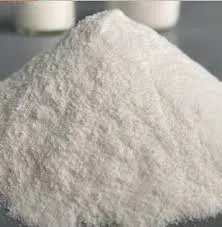
Nov . 22, 2024 05:24 Back to list
cellulose ether
Understanding Cellulose Ether Properties, Applications, and Significance
Cellulose ether, a derivative of cellulose, is a widely used polymer that plays a critical role across various industries due to its unique properties. As a non-toxic, biodegradable, and chemically stable compound, cellulose ether has gained extensive attention in fields such as pharmaceuticals, food production, cosmetics, and construction. This article explores the properties of cellulose ether, its applications, and its significance in modern technology.
What is Cellulose Ether?
Cellulose ether is formed by the etherification of cellulose, which is a natural polysaccharide found in the cell walls of plants. During the etherification process, hydroxyl groups in the cellulose molecule are replaced with ether linkages, resulting in various types of cellulose ethers such as methylcellulose (MC), hydroxypropyl cellulose (HPC), and hydroxypropyl methylcellulose (HPMC). These modifications significantly alter the physical and chemical properties of cellulose, enabling it to be utilized in a multitude of applications.
Properties of Cellulose Ether
One of the most remarkable properties of cellulose ether is its solubility in water, depending on the degree of substitution and the type of ether. Methylcellulose, for instance, is soluble in cold water but forms a gel upon heating, making it ideal for food and pharmaceutical applications requiring specific viscosity and texture. On the other hand, hydroxypropyl methylcellulose is more soluble in both hot and cold water, adding flexibility to its usage in various formulations.
Cellulose ethers exhibit excellent thickening, binding, and stabilizing properties, which are essential in creating products with desired textures and consistencies. They are also pH-stable and exhibit good film-forming capabilities, making them valuable as coatings and binders in the cosmetic and pharmaceutical industries.
Applications of Cellulose Ether
1. Pharmaceutical Industry In pharmaceuticals, cellulose ethers are widely used as excipients in drug formulations. They help in controlling the release of active ingredients, enhancing the stability and bioavailability of drugs. HPMC is frequently used in the production of hydrophilic matrices and controlled-release tablets.
cellulose ether

2. Food Industry Cellulose ethers serve as food additives, improving the texture and consistency of various food products. They act as thickening agents, stabilizers, and emulsifiers, ensuring the desired quality in sauces, dressings, and baked goods. Furthermore, they help in retaining moisture and enhancing shelf life.
3. Cosmetic Products The cosmetic industry employs cellulose ethers due to their ability to improve product texture and increase viscosity. They are commonly found in lotions, creams, and gels. Their film-forming properties also help in creating a smooth application experience and enhancing the product's feel on the skin.
4. Construction In the construction sector, cellulose ethers are essential in manufacturing cement-based materials, such as tile adhesives and joint compounds. They enhance workability, improve adhesion, and prolong the open time, allowing for better application and finishing.
5. Personal Care Products Cellulose ethers are popular in the formulation of personal care products, including shampoos and conditioners, as they provide thickening, emulsifying, and stabilizing effects. They contribute to the overall performance and aesthetics of these products.
Environmental Considerations
With the increasing focus on sustainability, cellulose ether stands out due to its biodegradable nature. As it is derived from natural cellulose, it presents a more environmentally friendly alternative compared to synthetic polymers. Its application in eco-friendly products aligns with the growing demand for sustainable solutions in various industries.
Conclusion
Cellulose ether is a versatile and indispensable ingredient that significantly impacts numerous industries. Its unique properties, coupled with its ability to enhance product performance and stability, make it a critical component in modern formulations. As technology continues to evolve, the potential applications and benefits of cellulose ether are likely to expand, paving the way for innovative solutions that align with sustainability goals. Understanding cellulose ether’s properties and applications not only highlights its importance but also signifies the ongoing need for research and development in this area, ensuring it meets the demands of a dynamic market.
-
Versatile Hpmc Uses in Different Industries
NewsJun.19,2025
-
Redispersible Powder's Role in Enhancing Durability of Construction Products
NewsJun.19,2025
-
Hydroxyethyl Cellulose Applications Driving Green Industrial Processes
NewsJun.19,2025
-
Exploring Different Redispersible Polymer Powder
NewsJun.19,2025
-
Choosing the Right Mortar Bonding Agent
NewsJun.19,2025
-
Applications and Significance of China Hpmc in Modern Industries
NewsJun.19,2025







